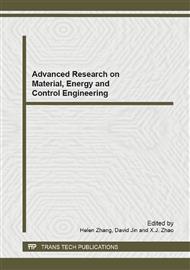p.139
p.143
p.147
p.153
p.158
p.162
p.166
p.170
p.174
The Manufacture and Nutritional Analysis of the Dioscorea batatas F.flablla.Makiro Jam with Material Properties
Abstract:
Dioscorea batatas F.flablla.Makiro, jam , nutrition , process, analysis Abstract: In the present study the Dioscorea batatas F.flablla.Makiro was used as the raw material to further exploitation and utilization and carry out the intensive processing of it. After cleaning and grinding into sauce and mixing with the supplementary material , and sterilizing the Dioscorea batatas F.flablla.Makiro jam was bottled and the nutritional of the ingredient of the jam was analysised by chemical and instrumental method. The results indicated that the Dioscorea batatas F.flablla.Makiro jam's color was bright and light red brown. Its flavor was tasty and the nutrition was rich. The protein content was 3.35%, including 17 kinds of amino acids and 8 kinds of essential amino acids needed by the human body. The fat was 1.81%, as well as the rich mineral substances and the vitamin. The Dioscorea batatas F.flablla.Makiro jam was one of the nutritional condiments for the old and the young. This study provided a theoretical and practical foundation for further exploitation and utilization of the Dioscorea batatas F.flablla.Makiro.
Info:
Periodical:
Pages:
158-161
Citation:
Online since:
January 2013
Authors:
Keywords:
Price:
Сopyright:
© 2013 Trans Tech Publications Ltd. All Rights Reserved
Share:
Citation:


